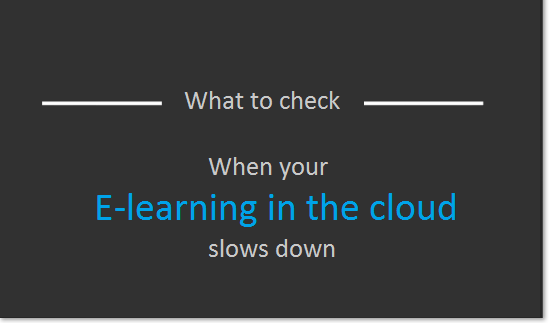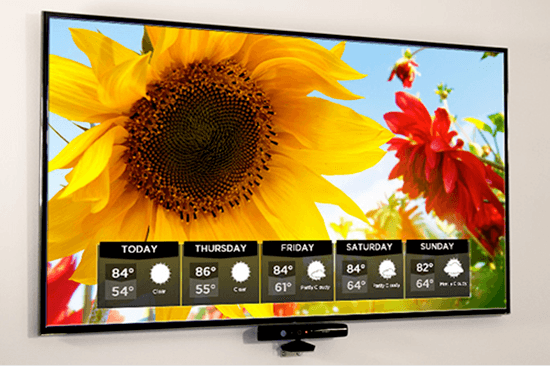Slow Internet: What Is The “Problem”?
During 10 years of providing cloud based learning platforms I’ve often had to explain slow internet and what the “problem” is.
The “problem” is users of an online learning platform being unable to access their learning platform over the internet. There are also variations on the “problem”:
- “It’s running slow”.
- “It always slows down at lunchtime”.
- “The site is running slow for me, but it’s okay for my colleagues”.
Essentially, “the problem” amounts to the same thing. Users of the learning platform are not enjoying their usual acceptable level of performance. When this happens, users will often turn to the learning platform supplier, assuming that because they can’t access the learning platform, it is “not working properly”.
This article explains why that’s not always the case and gives simple tips and checks you can perform.
Consider A Car Journey
Imagine you’re leaving home to drive to a meeting with one of your suppliers. You walk out of your house and get into your car. But your car won’t start and doesn’t even get you out of your driveway. Is that your supplier’s fault? Your supplier is most probably already waiting at their offices and their services are still available to you; it’s just that you can’t currently get to their services.
Let’s say you did make it out of your driveway, but you hit serious traffic congestion that slows you down. Is that your supplier’s fault? As before, your supplier is probably still at their offices and their services are still available to you; it’s just you can’t get to your supplier in a timely manner, because the route you chose is currently busier than you’d normally expect.
At some point you might actually consider an alternative route. You know it will take a lot longer, but if your supplier can meet you later on, it might just work. If there are no alternative routes, or they’re just as congested and the roads don’t clear, your plans for the meeting might be scuppered until the problems on the roads subside.
Throughout your journey, your supplier and their services were always available to you. The problems and delays were caused by your car, the road infrastructure, other road traffic conditions, or all of these factors; but neither you nor your supplier were to blame.
Consider The Roads That Your Car Uses
Think of the underlying infrastructure of the internet as similar to a road transport system. You use your driveway to take your car onto the street you live on; the internet uses copper cables (or fiber) to take your web traffic out of your house and along your street.
You (and your neighbors) use the street you live on to take your cars along to a “B” road – the internet uses cables to take your web traffic (and your neighbors’ web traffic) into a connection cabinet at the end of the road.
Your “B” road will take your car (and all other cars from surrounding neighborhoods) up to an “A” road – the internet uses lots of connection cabinets spread around your surrounding neighborhoods to pass your web traffic (and all other web traffic from your surrounding neighborhoods) into your local telephone exchange.

The further you move up the road traffic chain, the bigger, wider, and faster the roads get (think dual carriageways and motorways). This is similar to the internet with its interconnected telephone exchanges, hubs, and superfast fiber highways.
On your road journey you will encounter crossroads, junctions, and roundabouts where road traffic is merging and coming together – the internet also has interconnection points, ranging from little boxes outside your house to very big boxes where vast amounts of web traffic merges together and is re-directed on to its destination.
Slow Internet Problems And Diagnosis Tips
Just like on your car journey where things can go wrong, the internet is no different and there are many reasons why things might go wrong. Let’s take a look at a few typical problems, as well as a few tools and tips to help you figure things out for yourself.
1. Check your own access.
If you suspect a problem, first check if your browser and computer are working okay. Verify this by seeing if you can access other websites. Make sure that you clear your browser cache to ensure you’re accessing a live webpage and not a stored version already on your computer.
2. Check your learning platform site.
If you can access other websites then it’s time to see if the learning platform site is down. These websites can help:
These websites send web traffic along a number of different internet routes to check if your online learning platform is accessible via any of those different routes. If the learning platform is accessible by one of those routes, you will be told “It’s probably just not working for you”. If the web traffic cannot reach your learning platform site along any of those routes, then it’ll say “It looks like it’s down for everyone”.
This doesn’t necessarily mean it is definitely your supplier’s fault. It could still be a problem beyond their control, but it’s probably a good time for them to be investigating “the problem” with you.
3. Give it five minutes.
A lot of problems can come and go in an instant (commonly known as “glitches” or “gremlins”). Go and make a cup of coffee and try again when you get back.
4. Why is it slow right now?
Your car journey might suffer from diversions (due to road closures, accidents, etc.) but you can still take a different route to your destination, even though you know the journey will take longer. In the same way internet traffic gets diverted (due to equipment failure, cables being cut by workmen, etc.). If that’s the case, it may take your web traffic longer to reach its destination. Also because there’s a major internet route broken, all of the web traffic that would normally use that route is now also using an alternative route, leading to even more congestion (slow internet).
5. Why is it slow at certain times?
If you’re in an office or academic environment, most people will take a lunch break and go online at the same time. When everyone goes on at once it can clog things up causing things to slow down. You might experience slow internet when you get home in the evening because everyone else in your neighborhood is arriving home at a similar time and they’re all going online too. Their web traffic is using some of the same infrastructure that yours is… Hence the congestion you might be experiencing.
Check what speed you’re able to access the internet using a speed checker website such as these:
These websites will give you a reasonable indication of your connection speed. But you must remember it’s only the speed you’re accessing the internet during the test! Different tests on different days and at different times will likely show hugely different speeds, depending on how much other web traffic is using the same “roads” as you.
Keep a log of dates and time when you experience problems. Share that information with your internal IT teams, because they can restrict other traffic (and websites) or they might be able to give you a guaranteed level of performance at busy times… If you ask nicely!
6. Why is it slow for me but it’s working fine for my colleagues?
Your colleagues may not necessarily be using the same infrastructure as you (even though you might be in the same office building).
So Who’S Fault Is It When You Have Slow Internet?
The infrastructure the internet uses is similar to road transport systems in that there is a diverse range of possibilities for failure and disruption to traffic.
“The problem” might be the fault of the online learning platform, your own devices, infrastructure in your office or home, or the infrastructure the internet relies on to work. Therefore, it could be the fault of your supplier, your own equipment’s, or it could be due to something outside of either party's control.
Regardless of where “the problem” is, make sure you work with an online learning platform provider that has a solid service level agreement. You should know where each of your responsibilities lie and what service availability you can expect overall. Make sure your supplier will help you understand slow internet problems and help you explain those problems to your own customers and end users. Most important of all, make sure you choose a supplier who will take responsibility in helping you to identify and manage “the problem” through to resolution, regardless of where the blame lies.









